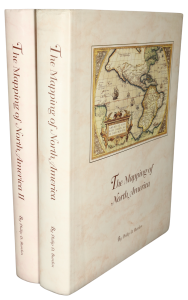Rare Maps and Prints
- World & Celestial
- North America
- West Indies, South & Central America
- British Isles
- British Isles
- English counties
- Large-scale
- Bedfordshire
- Berkshire
- Buckinghamshire
- Cambridgeshire
- Cheshire
- Cornwall
- Cumberland
- Derbyshire
- Devon
- Dorset
- Durham
- Essex
- Gloucestershire
- Hampshire
- Herefordshire
- Hertfordshire
- Huntingdonshire
- Islands
- Kent
- Lancashire
- Leicestershire
- Lincolnshire
- Middlesex
- Norfolk
- Northamptonshire
- Northumberland
- Nottinghamshire
- Oxfordshire
- Rutland
- Shropshire
- Somerset
- Staffordshire
- Suffolk
- Surrey
- Sussex
- Warwickshire
- Westmoreland
- Wiltshire
- Worcestershire
- Yorkshire
- Wales
- Scotland
- Ireland
- Western Europe
- Eastern Europe
- Middle East
- Africa
- Asia
- Australasia & Pacific
- Decorative Prints
- Title Pages
Mr. Philip D. Burden
P.O. Box 863,
Chalfont St. Giles, Bucks HP6 9HD,
UNITED KINGDOM
Tel: +44 (0) 1494 76 33 13
Email: enquiries@caburden.com
THE FIRST PRINTED MAP OF TENNESSEE. The State of Tennessee was formed from the land ceded by North Carolina to the federal government in 1789. A number of pioneers had migrated to the region before this date. The late 1770s was a bloody period of conflict with the Cherokee Indians. One of the earliest formal boundary surveys undertaken of the region was that between North Carolina and Virginia in 1779-80 to extend the line between them further west. This only helped to encourage land grabbing which became extensive. One of the survey commissioners was General Daniel Smith for Virginia. Smith (1748-1818) was born in Stafford County, Virginia, and attended William and Mary College where he studied as a surveyor and engineer. A few years after the boundary survey he moved to Tennessee and became one of the prime political leaders. In 1795 Smith was once again asked to produce a more accurate map of the territory but declined and focused on his political interests. Tennessee achieved statehood on 1 June 1796. It was not until Mathew Rhea’s map of 1832 that a larger one was published.
Knoxville is depicted founded only seven years earlier in 1786 by the Revolutionary War officer James White and his friend James Connor when they built White’s Fort. It was the first capital of the future state before being transferred to Nashville which is also depicted. Another Revolutionary War veteran John Nash founded the settlement 1779. Nearby is the settlement of Clarksville founded in 1785 by General George Rogers Clark, the brother of William Clark of Lewis and Clark fame. References to attract prospective land owners include ‘Light Soil Long Grass Little Timber Broken Ground on the Heads of these Rivers’ just to the east of the Mississippi. The extensive river system is detailed and named as are numerous Indian villages. The results of Henry Rutherford’s expedition in western Tennessee are the five tributaries to the Mississippi River. Also named here is ‘Chickasaw bluff’ the site of the city of Memphis today. A table of References lower left identifies ‘Public Roads’, ‘Indian Boundaries’ & Towns and curiously the ‘Width of the Rivers in Yards’ marking crossing points. The mountains are recorded pictorially, the Prime Meridian is from Philadelphia and the whole is drawn on the scale of 22 miles to the inch. The map is engraved by Joseph T. Scott.
Daniel Smith published ‘A Short Description of the Tennassee[sic] Government to accompany and explain a Map of that Country’ in 1793. The map was however apparently published separately as no example is found with the map other than having been inserted at a later date. Indeed the first advert for the map was in the ‘Independent Gazetteer’ published in Philadelphia 29 January 1794. Its first inclusion in a publication was Mathew Carey’s ‘General Atlas for Carey’s Edition of Guthrie’s Geography Improved’, 1794-95. This is an example of the first state before the alteration of the title to record its new found statehood in 1796.
Provenance: this example is from a gift of the United States Government to Constantin François de Chassebœuf, Comte de Volney, author of a ‘Tableau de climat et du sol des Etats-Unis d’Amerique’, first published in Paris, 1803. Volney (1757-1820) was a French philosopher and politician. Of noble birth he became a friend of Benjamin Franklin. During the early 1780s he travelled in the Middle East and published his notes upon his return. He remained in a position of influence following the French Revolution being a member of the National Constituent Assembly. However he to fell victim to the Jacobin Club and narrowly escaped the guillotine. Quite probably this close call encouraged his visit to the United States in 1795 but even there he could not escape trouble. In 1797 he was accused of being a French spy by John Adams in connection with French interests in Louisiana. He was forced to return to France in 1798. The results of his travels in America were his book on the climate and soil. Jillson ‘Early Kentucky Maps’ pp. 37-8; Ristow (1985) ‘American Maps and Mapmakers’ p. 137-8; Sabin 82420; Vail ‘Old Frontier’ no. 955; Wells, Ann H. Tennessee Historical Quarterly, Vol. XXXV, no. 2 Summer, 1976, p. 142; Wheat & Brun 650.
Knoxville is depicted founded only seven years earlier in 1786 by the Revolutionary War officer James White and his friend James Connor when they built White’s Fort. It was the first capital of the future state before being transferred to Nashville which is also depicted. Another Revolutionary War veteran John Nash founded the settlement 1779. Nearby is the settlement of Clarksville founded in 1785 by General George Rogers Clark, the brother of William Clark of Lewis and Clark fame. References to attract prospective land owners include ‘Light Soil Long Grass Little Timber Broken Ground on the Heads of these Rivers’ just to the east of the Mississippi. The extensive river system is detailed and named as are numerous Indian villages. The results of Henry Rutherford’s expedition in western Tennessee are the five tributaries to the Mississippi River. Also named here is ‘Chickasaw bluff’ the site of the city of Memphis today. A table of References lower left identifies ‘Public Roads’, ‘Indian Boundaries’ & Towns and curiously the ‘Width of the Rivers in Yards’ marking crossing points. The mountains are recorded pictorially, the Prime Meridian is from Philadelphia and the whole is drawn on the scale of 22 miles to the inch. The map is engraved by Joseph T. Scott.
Daniel Smith published ‘A Short Description of the Tennassee[sic] Government to accompany and explain a Map of that Country’ in 1793. The map was however apparently published separately as no example is found with the map other than having been inserted at a later date. Indeed the first advert for the map was in the ‘Independent Gazetteer’ published in Philadelphia 29 January 1794. Its first inclusion in a publication was Mathew Carey’s ‘General Atlas for Carey’s Edition of Guthrie’s Geography Improved’, 1794-95. This is an example of the first state before the alteration of the title to record its new found statehood in 1796.
Provenance: this example is from a gift of the United States Government to Constantin François de Chassebœuf, Comte de Volney, author of a ‘Tableau de climat et du sol des Etats-Unis d’Amerique’, first published in Paris, 1803. Volney (1757-1820) was a French philosopher and politician. Of noble birth he became a friend of Benjamin Franklin. During the early 1780s he travelled in the Middle East and published his notes upon his return. He remained in a position of influence following the French Revolution being a member of the National Constituent Assembly. However he to fell victim to the Jacobin Club and narrowly escaped the guillotine. Quite probably this close call encouraged his visit to the United States in 1795 but even there he could not escape trouble. In 1797 he was accused of being a French spy by John Adams in connection with French interests in Louisiana. He was forced to return to France in 1798. The results of his travels in America were his book on the climate and soil. Jillson ‘Early Kentucky Maps’ pp. 37-8; Ristow (1985) ‘American Maps and Mapmakers’ p. 137-8; Sabin 82420; Vail ‘Old Frontier’ no. 955; Wells, Ann H. Tennessee Historical Quarterly, Vol. XXXV, no. 2 Summer, 1976, p. 142; Wheat & Brun 650.
CAREY, Mathew
A Map of the Tennassee Government formerly Part of North Carolina taken Chiefly from Surveys by Genl. D. Smith & others
Philadelphia, 1794
245 x 520 mm., with some light foxing and browning to the right margin, otherwise in good condition.
Stock number: 7991
SOLD






